NASA's Juno probe has been orbiting Jupiter since 5 July 2016, swooping past the gas giant once every 53 days. By combining the data collected during its close passes - or 'perijoves' - the Juno science team is working to reveal the world beneath the planet's cloud tops.
During its swooping passes, the NASA orbiter has imaged the upper cloud deck and peered into the planet’s depths, mapping out the gas giant’s magnetic and gravitational structure to create a three-dimensional picture of the Solar System’s largest planet.
Juno mission data, for example, has been used to uncover what's going on beneath Jupiter's clouds.
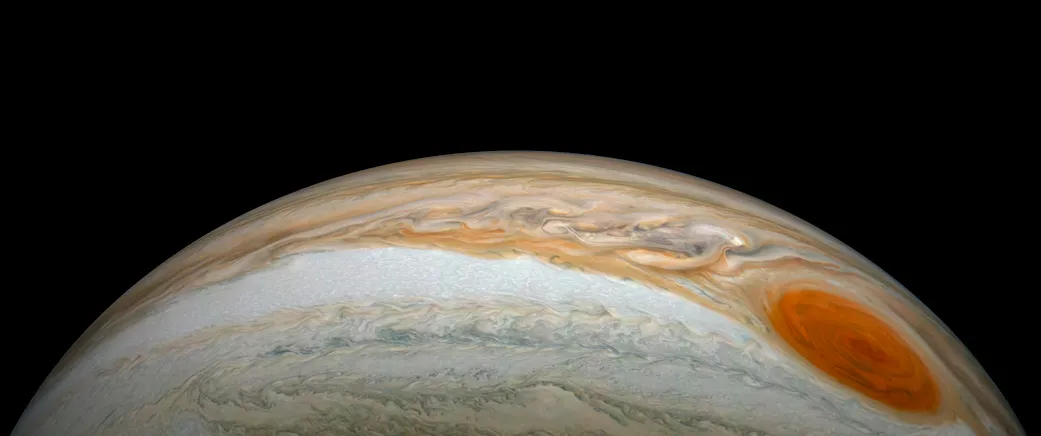
Juno's mission extension
The Juno mission was originally intended to meet its fiery end in August 2021 by intentionally crashing into Jupiter’s atmosphere.
But in January 2021, NASA granted Juno a reprieve and the mission has been extended to September 2025.
Juno’s original end date was predicted based on the number of orbits required to map out Jupiter before the intense radiation created by the planet’s massive magnetic field ravaged the probe’s electronics.
To protect Juno as long as possible, the most important components were locked inside a vault made of 1cm-thick titanium, designed to stop all but the most energetic radiation.
Juno’s Principal Investigator Scott Bolton is upbeat about how well the craft’s protection has performed.
"So far, we have not seen any signs of significant radiation related degradation that’s important to us," he says.
"We built an armoured tank and it turned out our shielding is holding up."
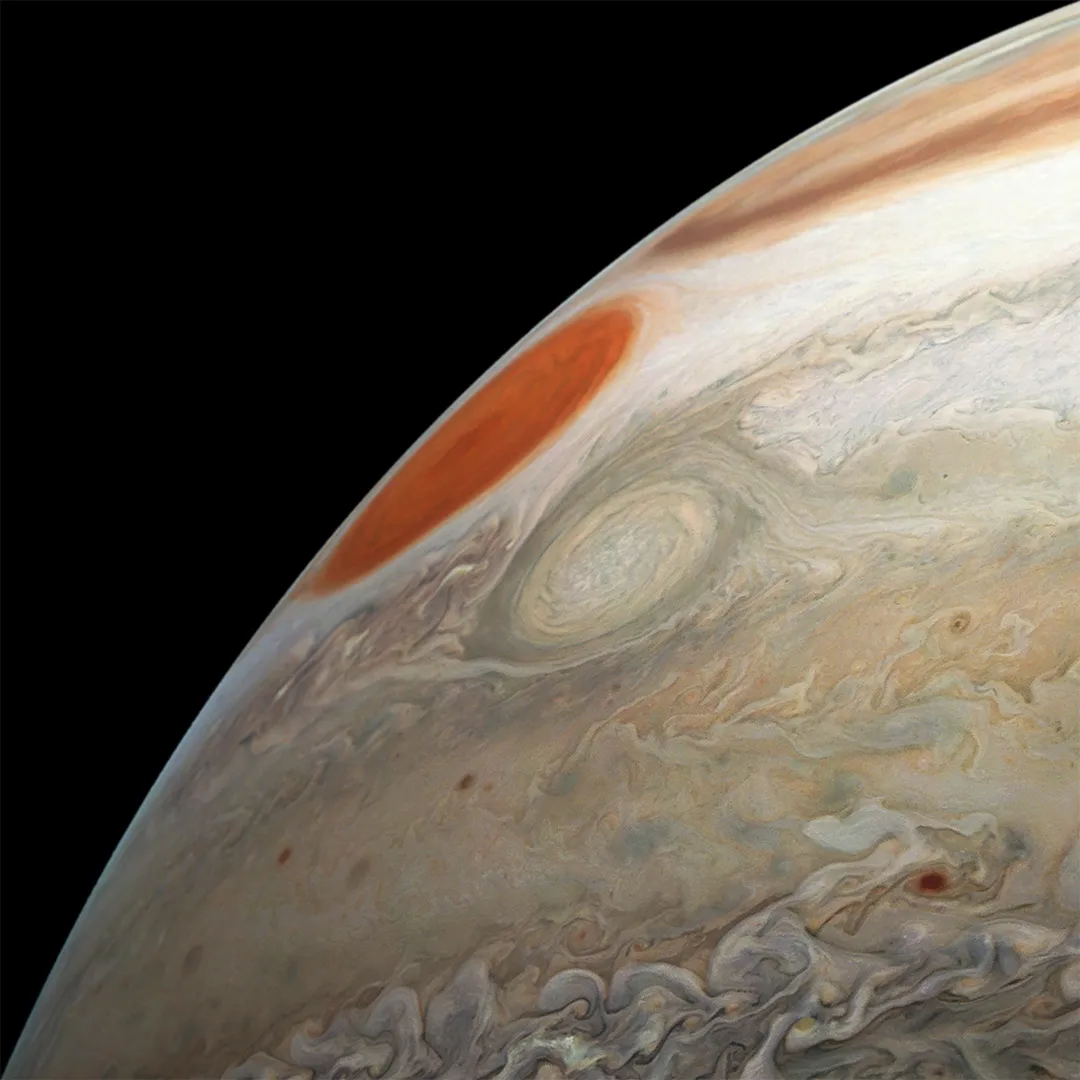
What will Juno be studying at Jupiter?
Juno can now delve even deeper into Jupiter's mysteries – many of which the probe itself has helped reveal.
Over the next four years, Juno will conduct 42 additional orbits of Jupiter, on top of the 34 from the prime mission.
These elliptical orbits swing out wide for most of the time to avoid the worst of Jupiter’s radiation, before quickly diving in close to get a good look at the planet.
This point of closest approach (the ‘perijove’), was initially close to the planet’s equator, but has been slowly creeping northwards at about 1˚ per orbit.
The northward drift has turned out to be hugely beneficial to the extended mission though, as it will now be able to take a closer look at several interesting features that the prime mission revealed.
As Juno passes over the poles, rather than circling the equator, planetary scientists attained their first ever close-up of these regions, revealing they were dominated by huge, swirling storms.
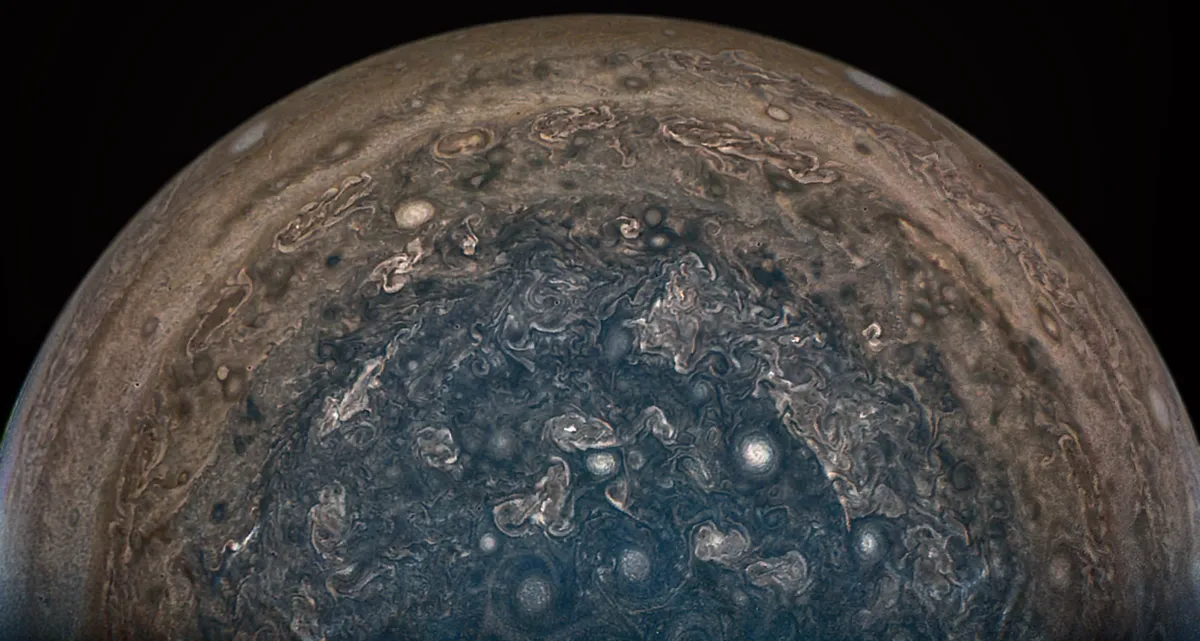
"We’ll be able to study the storms in the north in ways never before possible," says Bolton.
"We really don’t understand how they form, why they’re stable or what happens over time.
"We’ll be able to look deep into the atmosphere, underneath the giant vortices and see how they compare to the large vortex storms at lower latitudes, like the Great Red Spot."
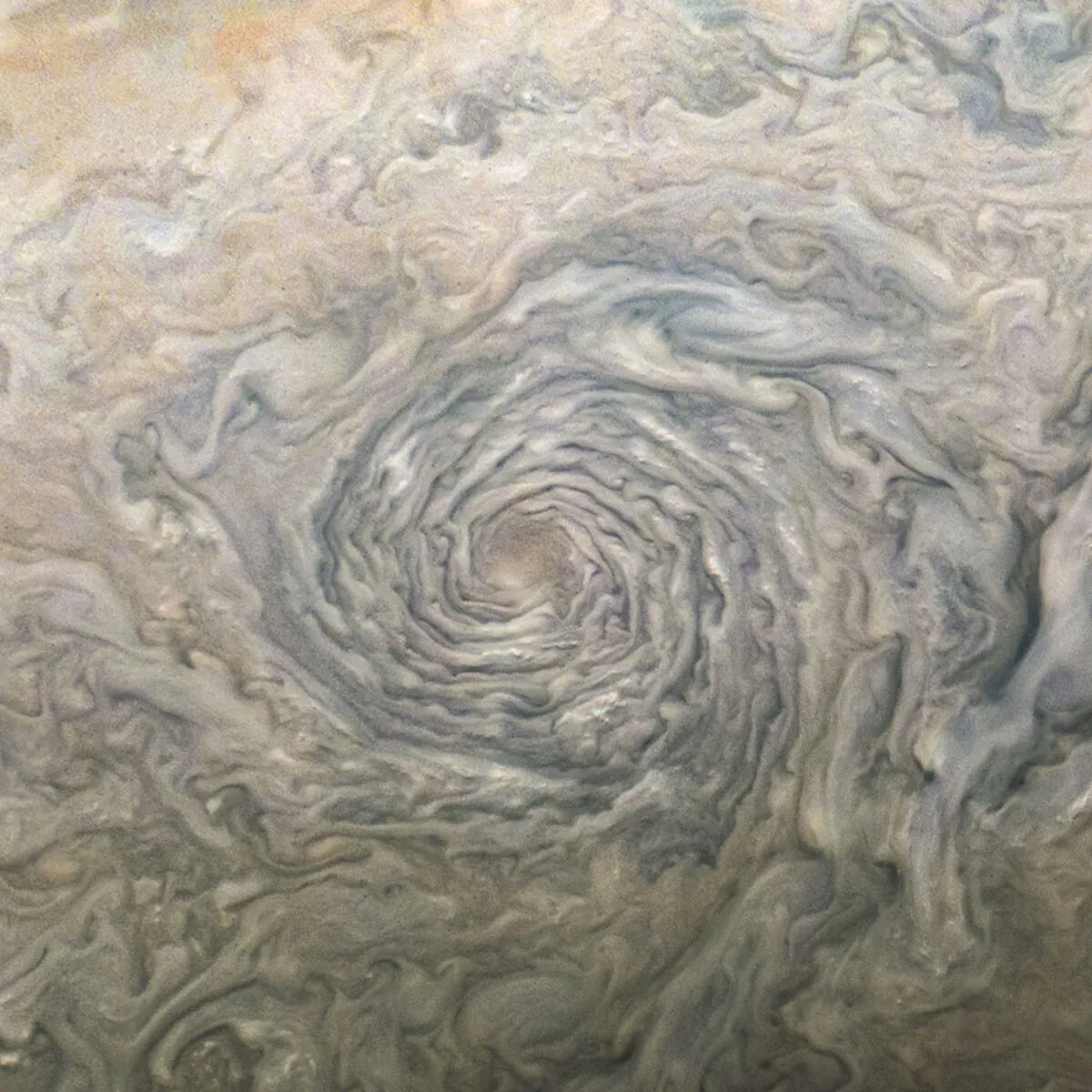
During the extended mission, Juno will get close enough to use its Microwave Radiometer, which can pierce up to 400km down through the clouds to look at both the storms’ root structures and the distribution of water and ammonia within them – both important chemicals for understanding how the planet’s atmosphere behaves.
"We know that Jupiter’s deep atmosphere changes, but how does that change happen as you go further north? What happens when the stripes that we call the zones and belts – where the winds go back and forth – start to change?" says Bolton.
Creating a storm map of Jupiter
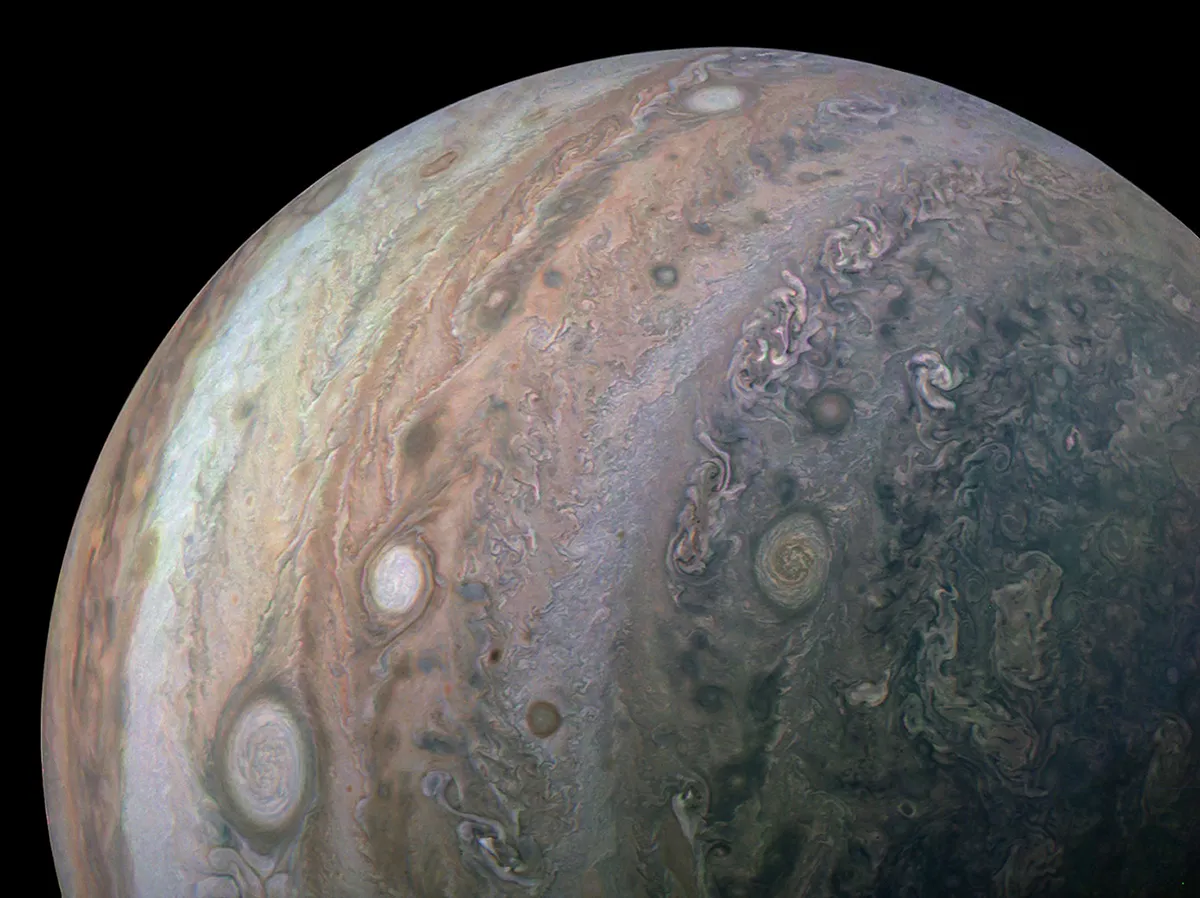
One of the areas Juno mission scientists will be paying particular attention to is where Jupiter's stripes transition into the giant polar cyclones.
Juno’s northward creeping will allow it to create a gravitational map of these storms.
It does this by taking careful measurements of its orbit, which can be compared to its predicted path to see where gravity has pulled it off course.
If the spacecraft is deflected, then gravity is stronger and that part of the planet is denser than expected, and vice versa.
"The zones and belts go through some kind of transition at northern latitudes, so getting more gravity data closer up will help investigate what happens during that transition," says Bolton.
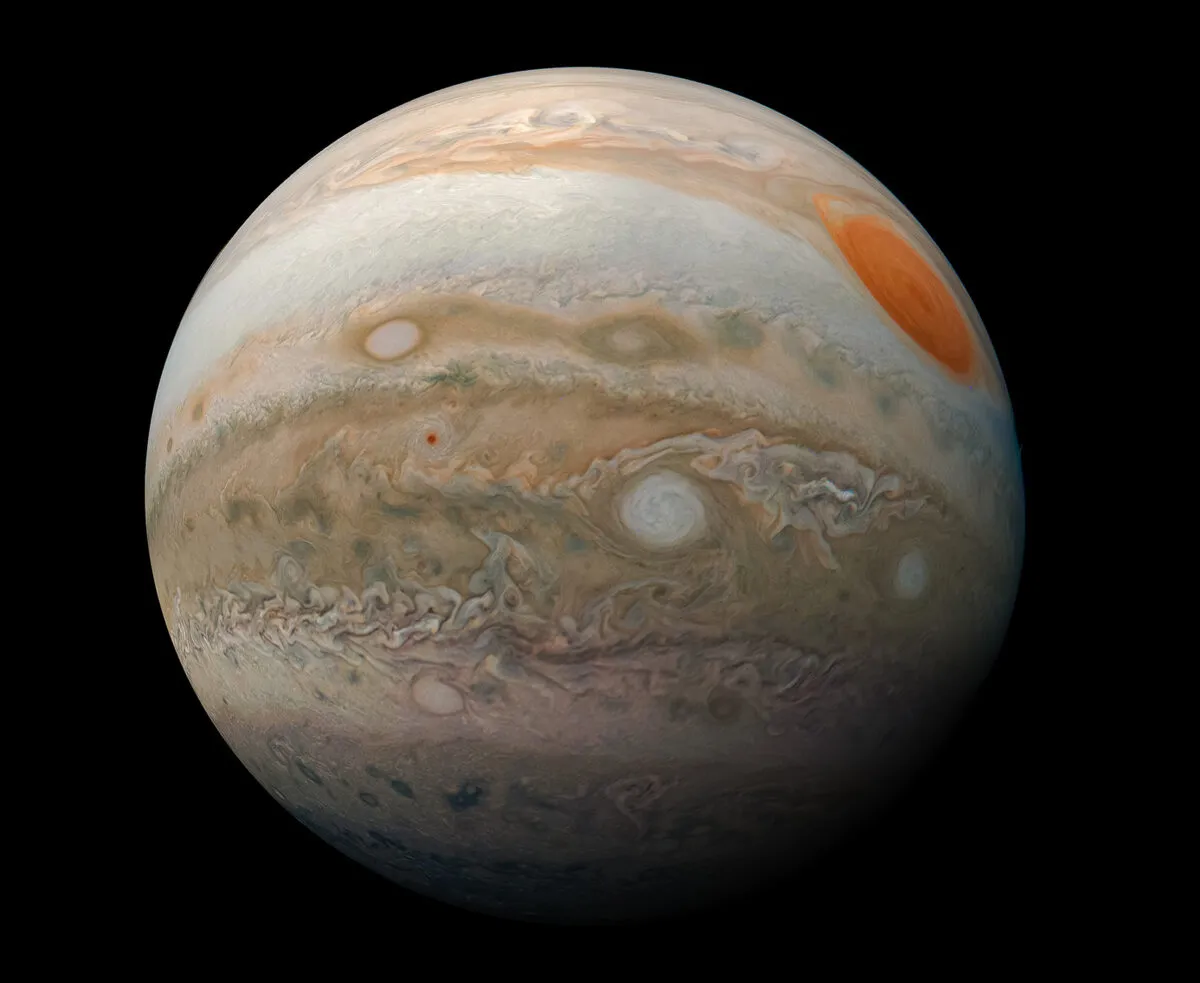
Lightning on Jupiter
Another area Juno will look into is the lightning that jumps between Jupiter’s clouds.
At lower latitudes Juno observed this lightning occurring at high altitudes, suggesting there must be liquid water clouds far above where they were expected.
"It should all be frozen at the altitude we saw the lightning," says Bolton.
"Most theories of lightning, the kind we’re seeing, suggest it needs three phases of something – liquid, gas and ice. There must be some sort of liquid at the altitude of the lightning, but it can’t be water because that would all be frozen.
"We came up with the idea that the ice was being melted by ammonia, which would act like antifreeze."
As most of the lightning was at northern latitudes, a closer look at the northern hemisphere will help pin down exactly how much it is happening on Jupiter and where it is.

Jupiter's aurora
Juno will also get closer to some of Jupiter’s most dramatic features – the aurorae.
Like Earth, Jupiter’s magnetic field captures and accelerates particles, which crash into the atmosphere at high latitudes, creating a glorious light show.
But unlike on Earth, Jupiter’s aurorae are largely outside the visible spectrum, shining in the ultraviolet and infrared wavelengths.
Juno has already detected some of the accelerated particles, but something else seemed to be missing.
"Even though we were pretty close, we couldn’t correlate the [number of] particles that we observed with the aurora that we were seeing," says Bolton.
"Some of the particles must be being accelerated closer to Jupiter than we were sampling."
The extended mission will see Juno get 10 times closer to the aurora, allowing it to hunt for these missing particles.
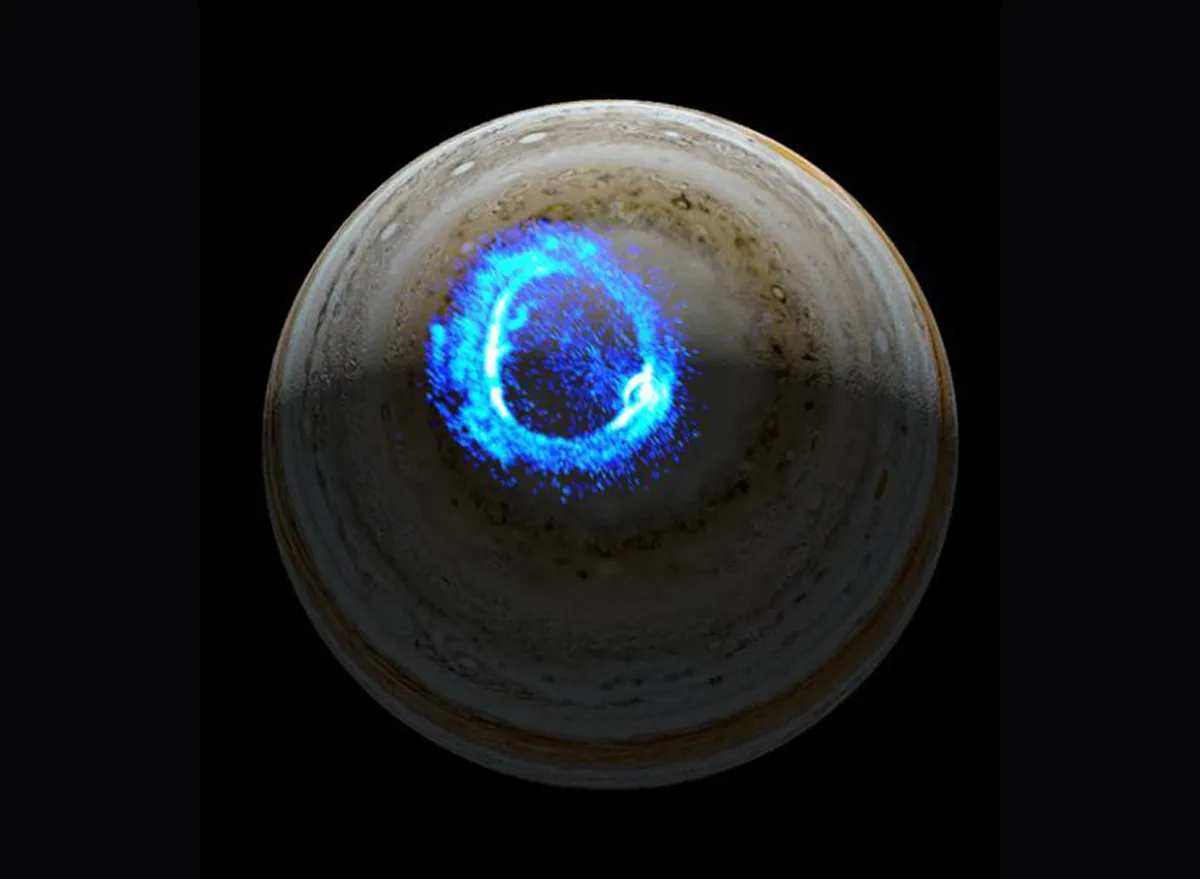
Jupiter's magnetic field
Juno will also be able to look at another piece of the puzzle: Jupiter's magnetic field.
"The magnetic field up in the north has really got a lot of structure, it has more complexity than the south,"says Bolton.
"We don’t fully understand that. All of Jupiter is asymmetric, which is surprising to us, because it’s a giant ball of gas, spinning around really fast.
"You would think it would get more symmetric, but we see asymmetry in the gravity field, the magnetic field and the atmosphere."
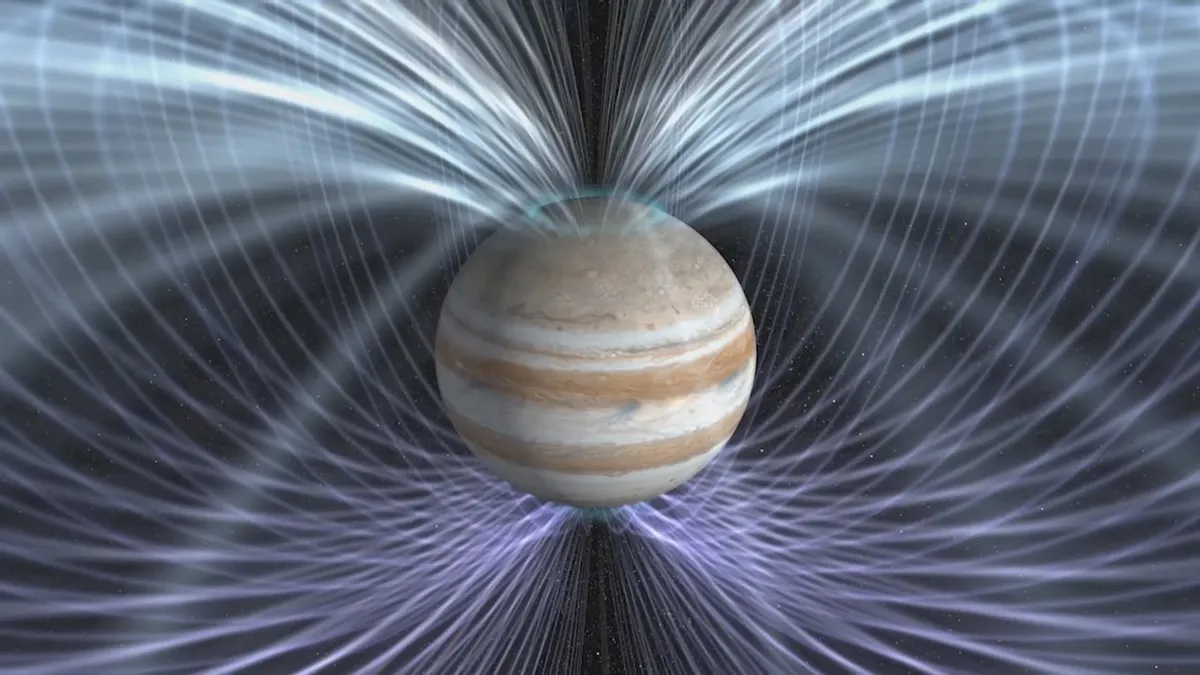
One of the magnetic features already seen by Juno further south, at the equator, is a patch of strong magnetism known as the Great Blue Spot, which shows signs that the magnetic field is being pushed around by Jupiter’s deep jets or winds.
“When we go to the north, there’s a whole bunch of these little features," says Bolton.
"They’re not quite as big as the Great Blue Spot, but we’ll get higher and higher resolution to be able to investigate them."
Exploring Jupiter's moons
How will Juno explore Jupiter's Galilean moons?
Ganymede
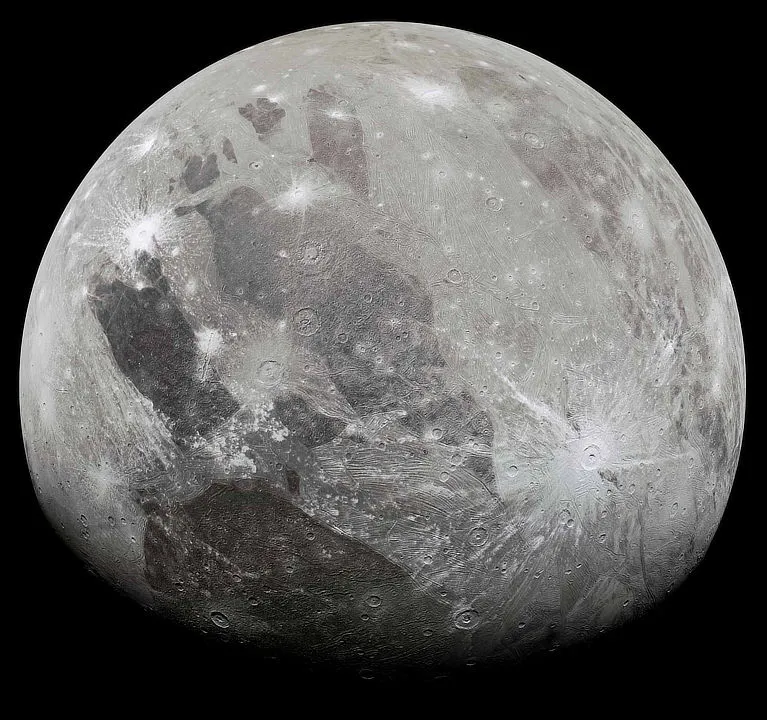
Not all of Juno’s attention will be focused on the planet itself. As the craft’s perijove moves northwards, the point at which Juno’s orbit crosses the plane of the moons moves inwards, meaning it will make close passes of three of Jupiter’s icy moons – one of which has already occurred.
Juno flew past Ganymede’s surface on 7 June 2021, using the manoeuvre to adjust its orbit, reducing the time to loop around Jupiter from 53 days down to 43.
Flying just 1,038km from the surface, it was able to take images with a resolution of 600m–900m per pixel. The team are planning to study these images before making any scientific judgements.
Europa
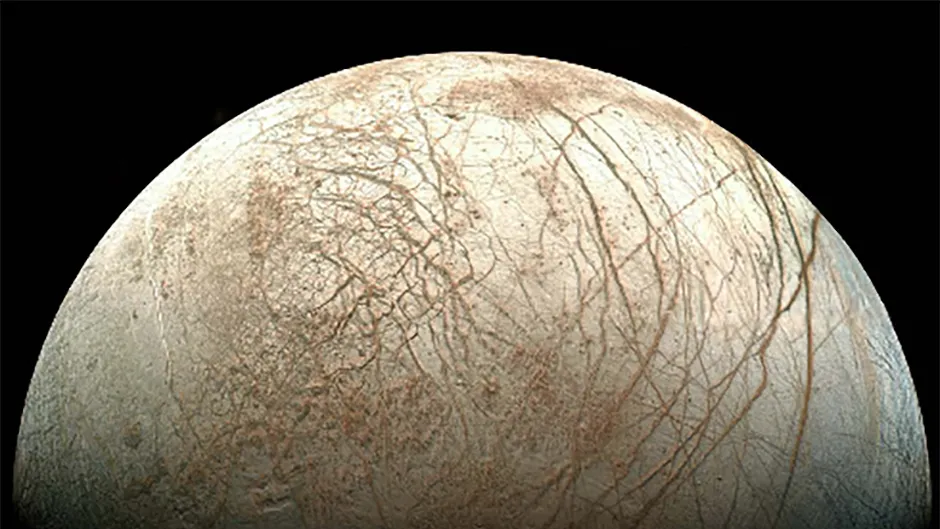
The next flyby on 29 September 2022 will see the spacecraft pass within 320km of Europa.
During this flyby, Juno will be able to use its Microwave Radiometer to look at the top 10km of ice.
This will search for where the ice is thin, or where cracks might appear in the icy crust, allowing water to escape from a subsurface ocean.
Io
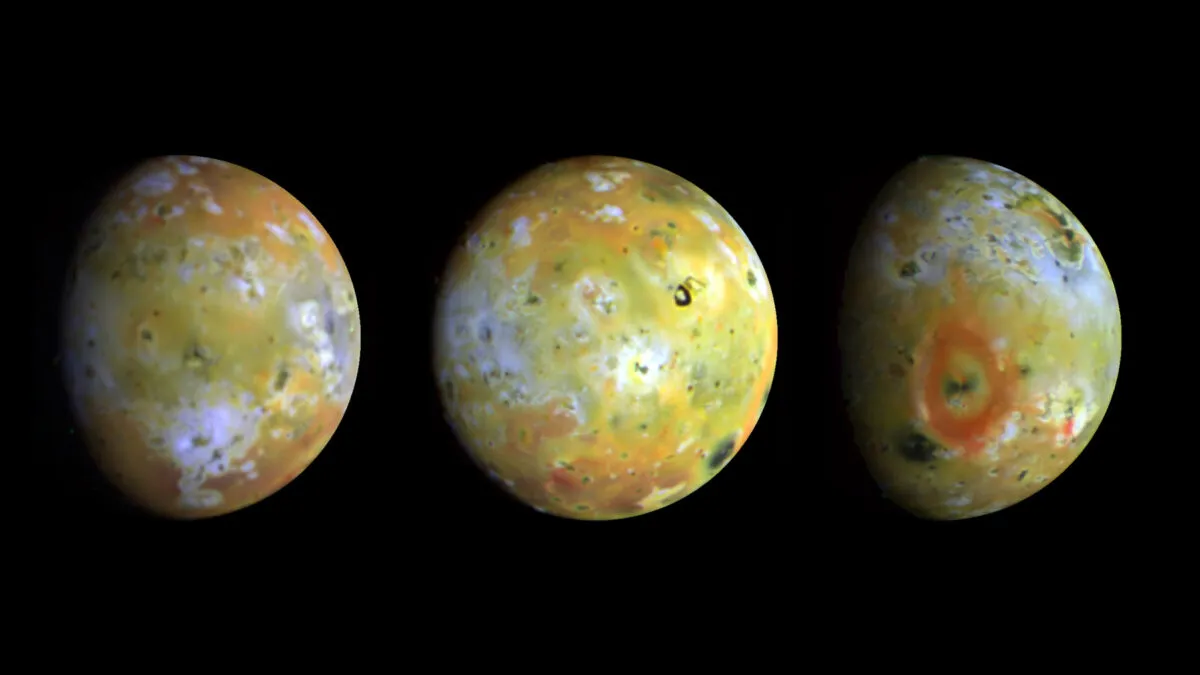
Next, Juno will make two flybys of Io on 30 December 2023 and 3 February 2024, passing either side of the moon 1,500km apart.
The moon is known for being the most volcanically active body in the Solar System, leading many to wonder if the surface is covered by a liquid magma ocean.
The dual flybys will measure the gravitational layout of the moon, revealing any surface magma.
Jupiter's rings
Finally, the path of the spacecraft will take it far enough in to reach the planet’s rings. While you might expect this dust-filled region to be hazardous to the spacecraft, that isn’t the case.
"The rings look like they’re full of material, but most of it’s empty space," says Bolton. What dust there is, however, Juno will try to study.
"We’re using the dust impacts for science; we have cameras onboard and plasma wave instruments that will detect when the solar panels are getting hit by dust. We’ll use that to learn about the dust, but a large pebble might hit us."
By that point in the mission, it’s expected Juno will be running out of the fuel it needs to keep its antenna pointed towards Earth and able to transmit back data.
That’s if it makes it to that point. Although Juno is faring well against the radiation, it is still constantly being bombarded and cannot hold out forever.
The initial plan for ending the Juno mission was to crash the spacecraft into the clouds of Jupiter, to make sure it doesn’t end up contaminating the potentially habitable Europa.
Fortunately, the new path will take it well within Europa’s orbit.
While that means it won’t be purposefully crashed, the spacecraft won’t avoid its meeting with Jupiter’s atmosphere entirely.
Eventually its path will collide with Jupiter and it will burn up in the atmosphere, meeting its end at the hands of the planet whose secrets it has spent years uncovering.
What has Juno discovered at Jupiter?
The Juno spacecraft has revolutionised our view of Jupiter, and given planetary scientists an abundance of data and discoveries. Here are some of Juno's mission highlights.
1
Great Blue Spot
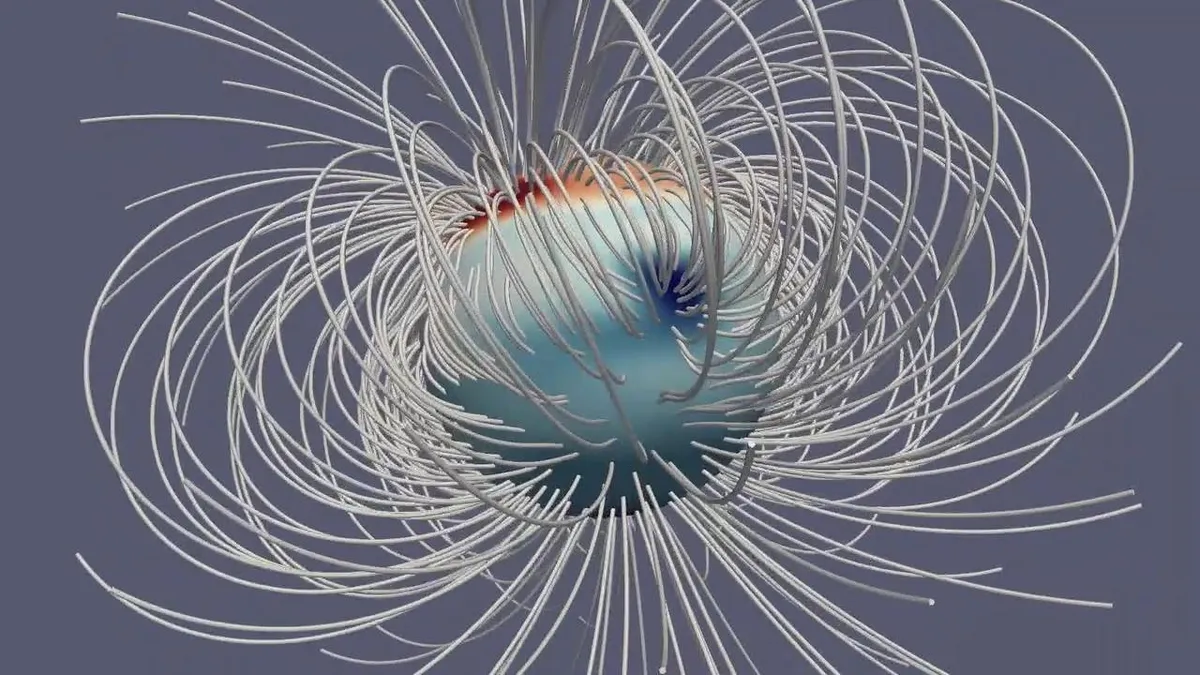
When the Juno team put together their map of the magnetic field, they discovered a dark spot of highly concentrated magnetism near the equator. Though invisible to the naked eye, the patch appeared blue in their map’s colour scheme – hence its name.
2
Storms of the poles
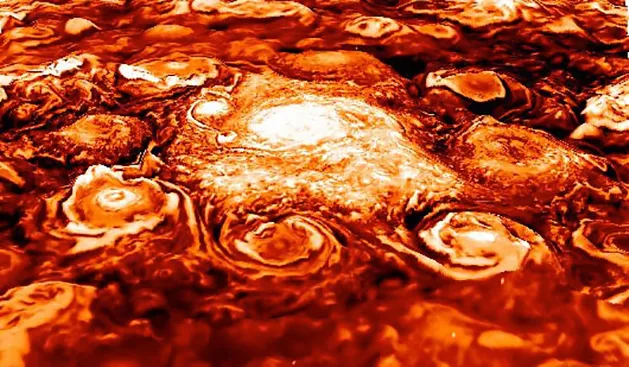
Juno was able to get the first ever look at Jupiter’s poles from above, finding they were swarmed by storms. The north pole has a single central storm, surrounded by 8 companions, ranging from 4,000km to 7,000km in size, which have remained stable throughout Juno’s mission.
3
Jupiter has water
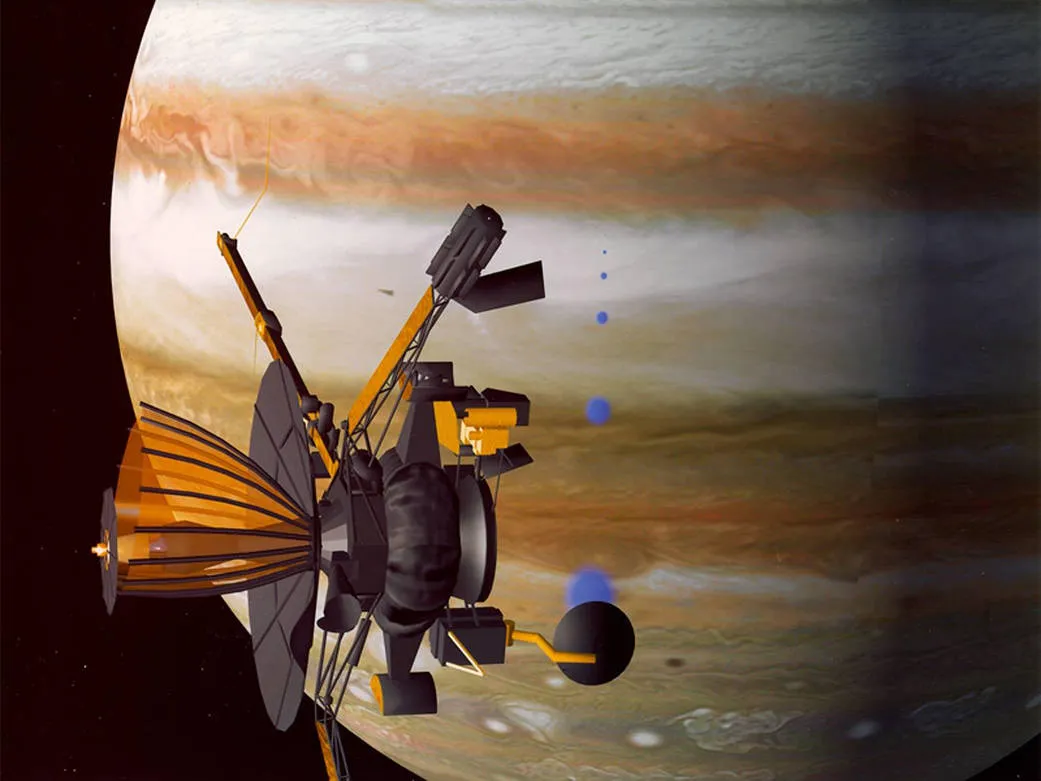
Juno found that Jupiter has three times more water than the Sun, putting to bed a decades-old mystery. In 1995 the Galileo spacecraft’s measurements indicated that the planet was far more arid, which suggested that the early Solar System had a lot less water than we see today.
4
Supercharged aurorae
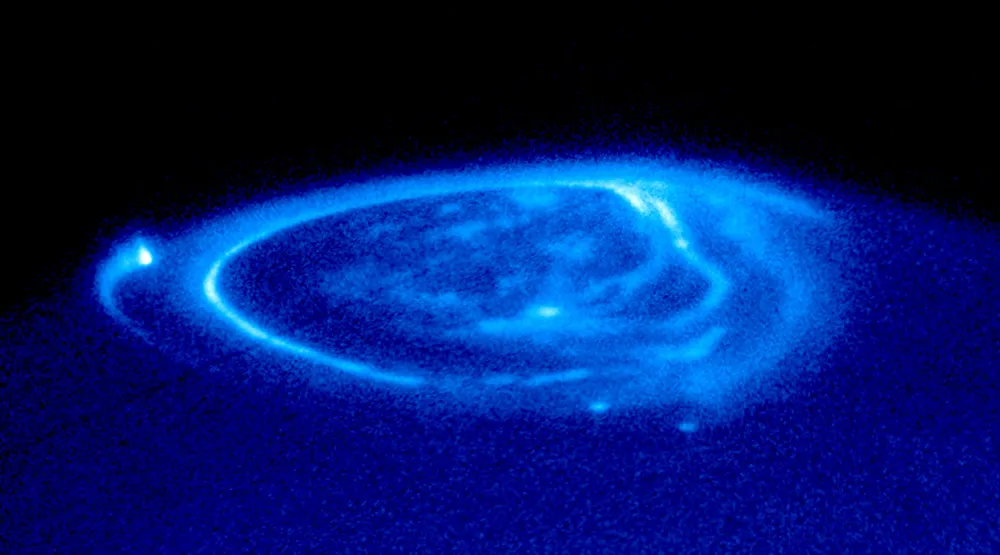
The electrical field around Jupiter’s poles, which helps create the aurorae, is around 100 times more charged than Earth’s. Juno also discovered a new ring-shaped feature that glows in the ultraviolet and which expands out at around 5km/s.
5
Jupiter's belts run deep
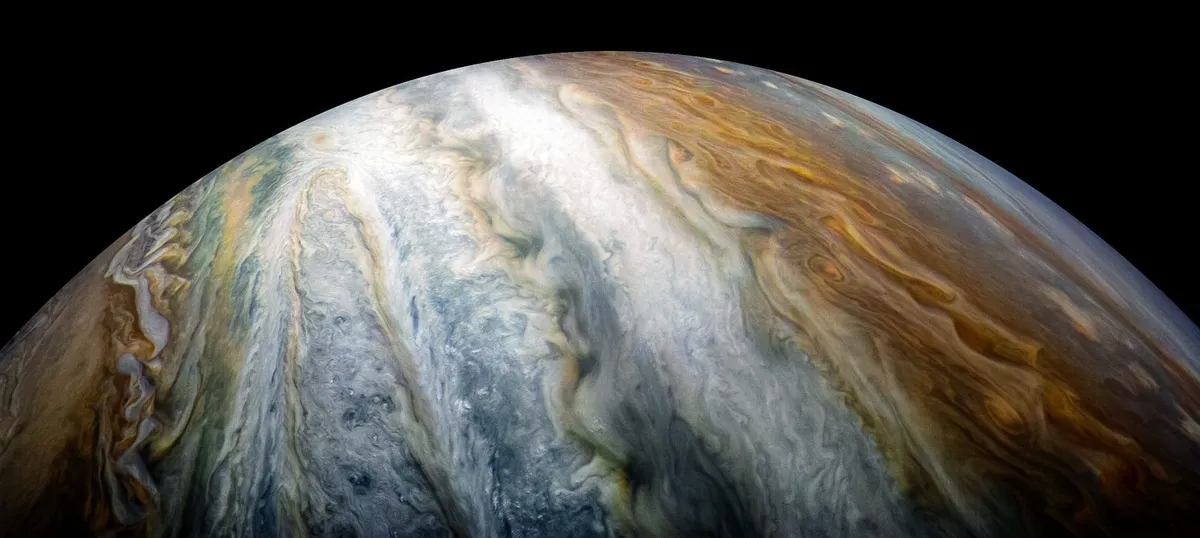
The spacecraft was able to look deep down into the stripes of wind and cloud known as belts and zones. Near the equator the regions go down 3,000km, becoming shallower towards the poles before blending into the polar storms.
6
The Great Red Spot in 3D

During the first part of its mission, Juno got a good look at the Great Red Spot, a giant maelstrom which has been raging for centuries. The spacecraft measured that the storm reaches down 320km into Jupiter’s atmosphere – over 30 times deeper than the deepest point of Earth’s oceans.
Juno's Jupiter journey so far
Previous missions have only been able to see the top few hundred kilometres of Jupiter’s atmosphere, a region striped with white zones and brown belts.
But Juno is carrying several instruments that are capable of seeing beyond this layer and peering down into the planet beneath.
The Microwave Radiometer, for instance, observes using wavelengths of light that can make the clouds appear transparent.
“What Juno’s revealed is that what we see at the cloud tops is just the tip of the iceberg,” says Dr Leigh Fletcher from the University of Leicester and a participating scientist on Juno.
“Below the cloud tops are these enormous structures that are responsible for what we see going on higher up. The exact mechanism of how what’s going on in the atmosphere is connected to what’s going on down at depth is still to be resolved, but if there’s any spacecraft that’s can do that, it’s Juno.”
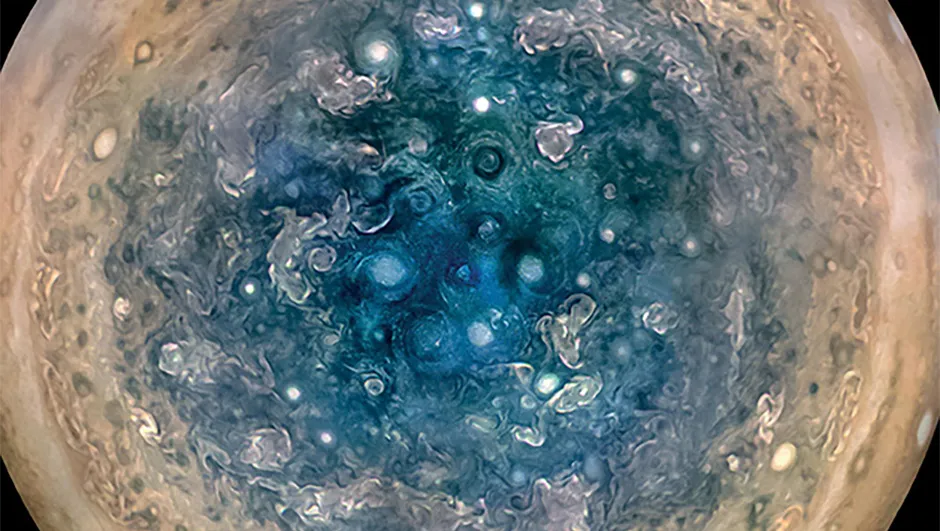
Jupiter's gravity
Juno also has a gravity instrument that measures how the planet tugs on the spacecraft.
If the gravity is stronger in one place, then it means there’s something massive or dense beneath the visible clouds in that region.
By looking out for subtle changes in the gravitational pull, researchers can create a density map of the planet.
Juno now has enough passes under its belt to start building up a global image of the gas giant.The detail improves with each perijove and is beginning to reveal the planet hidden beneath the clouds.
“We’ve determined that the winds you see at the cloud tops go down about 2,000–3,000km towards the inside of the planet. " says Dr Fletcher.
"Remember we’re talking about a planet that is over 70,000km in radius, so the winds of Jupiter are really only the outer shell of the planet.”
The amateurs are out in their back gardens taking images of Jupiter for us. It helps us track atmospheric features on the planet and allows us to target JunoCam’s observations to particular features of interest.
Dr Leigh Fletcher, University of Leicester.
The spacecraft also is also equipped with a magnetometer, which is mapping the gas giant’s immense magnetic field.
From the first orbit around Jupiter, Juno detected that the planet’s field was much stronger than expected. And now that it’s gathered enough data to begin building a map, a strange feature is beginning to emerge.
“People have been referring to it as the Great Blue Spot,” explains Dr Fletcher. “It’s not a great storm, like the Great Red Spot, but a region where all these magnetic field lines seem to diverge or converge, creating a strange pattern within the deep insides of Jupiter.”
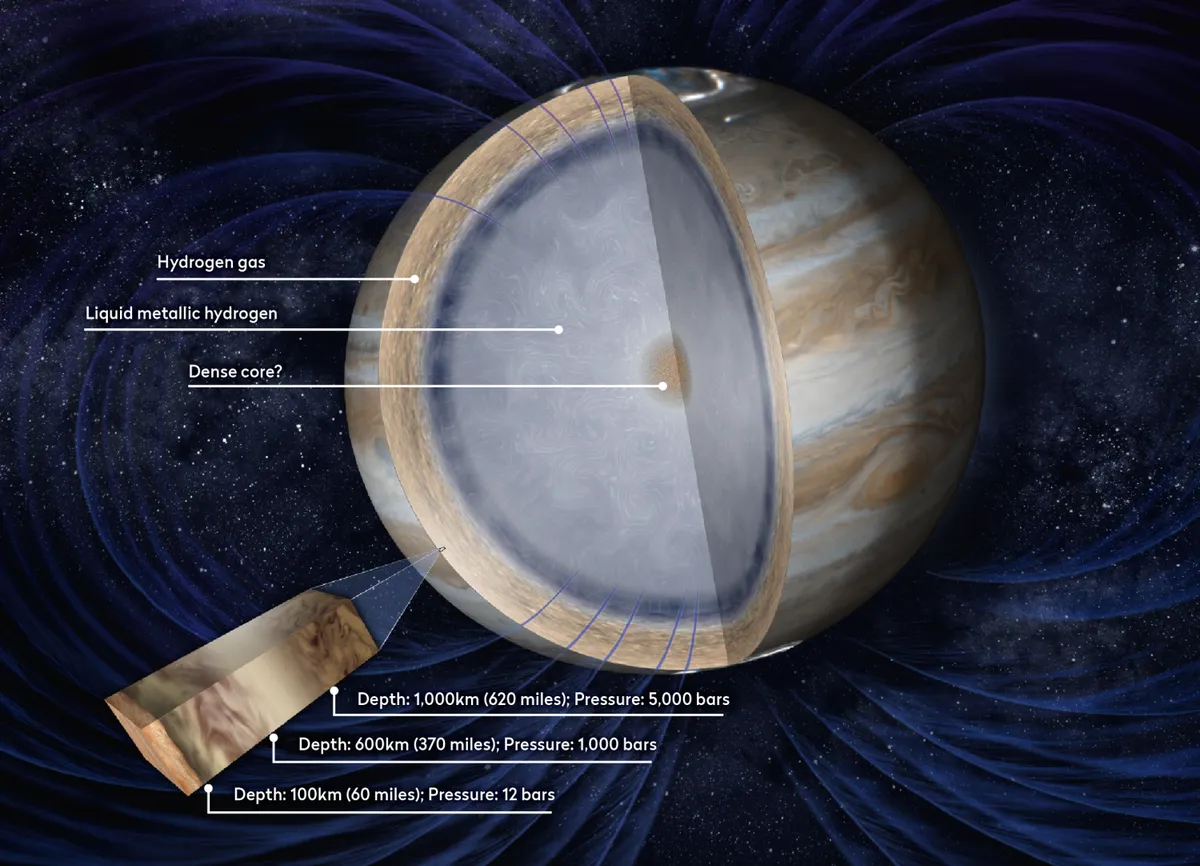
The field around the Great Blue Spot also seems to be changing over time, making Jupiter the only planet other than Earth where we’ve seen a dynamic magnetic field.
Observing how the ever-changing Jovian atmosphere evolves is one of the main goals of the Juno mission.
It’s hoped the probe’s unprecedented views of the planet will add to the decades of observations that have tracked how it changes during its long, 12-year orbit of the Sun, and inform the other changes noticed over longer timescales too.
For instance, Fletcher’s team noticed that every six to seven years, an event known as a disturbance cycle caused the white haze found at high altitude to disappear, revealing the dark brown clouds beneath.
These cycles create large streaks across the planet’s equatorial zone and remain visible for many months, and according to the six-to-seven-year pattern, the next one was due to begin in 2019.
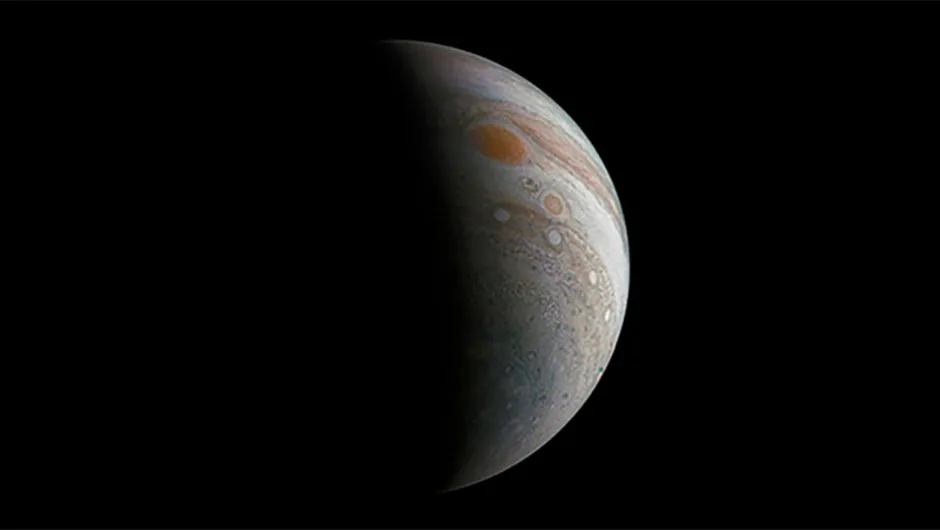
The timing was perfect. Not only is Juno in prime position to get a close-up look, but the event began just as Jupiter came into opposition, the point when the planet is at its closest to Earth and the best images can be taken.
The Juno team has been collaborating with professional and amateur astronomers all over the world who are observing Jupiter.
Many of these Earth-based astronomers are supplying views of the planet in light wavelengths that Juno can’t detect.
Telescopes used by professionals, such as the Hubble Space Telescope and the Very Large Array, deal with light at far ends of the spectrum (infrared and ultraviolet), while the visible part of the spectrum is covered by amateur astronomers.
And although this latter group might not have access to the multi-metre telescopes that the professionals do, what they do have is dedication.
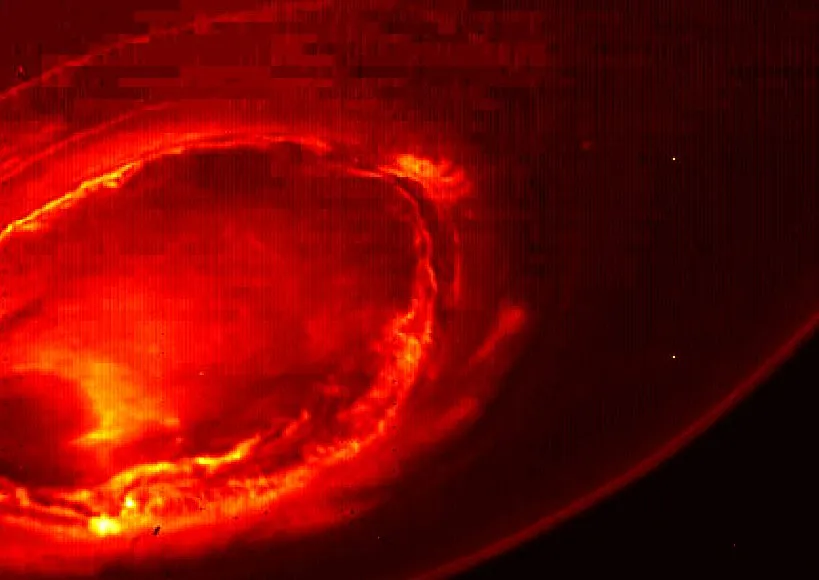
“The amateurs are out in their back gardens, night after night, taking images of Jupiter for us. It helps us track the various atmospheric features on the planet and allows us to target JunoCam’s observations to particular features of interest,” explains Dr Fletcher.
JunoCam, the spacecraft’s only visible light camera, was never intended as a scientific instrument.
Instead, it provides image data from its unprecedented viewpoint, which is immediately made available for anyone to process.
There is currently a thriving community of volunteers, with skills ranging from image editing to mathematical expertise, working together to turn the raw data being gathered by the JunoCam into beautiful and scientifically useful pictures.
“The JunoCam team itself is tiny. They don’t have the resources to process the images themselves, so this has been a very successful exercise in getting all these very passionate and talented people on board and feeling like one big team working together,” says Dr Fletcher.
The spectacular JunoCam images have helped to keep the mission in the public eye, despite it only being intended to last for the first few months, as the belts of extreme radiation that surround Jupiter can rapidly destroy sensitive components.
To avoid constant exposure, Juno follows a highly elliptical orbit, so the spacecraft only dips into the deadly region for a few hours every 53 days.
Even with this precaution, JunoCam was only expected to last through a few close passes. But three years later, it’s still going strong.
The unusual orbit has the added benefit of giving Juno an unusual perspective on the planet, sweeping from top to bottom and allowing it to look down on the poles.
From that perspective, Jupiter looks completely different. Gone are the familiar belts, replaced by giant storms.
In the north, eight cyclones encircle the pole, while the South Pole has only five.
“[At the poles] we enter a completely different regime that’s dominated by these small clusters of storms and enormous cyclones,” points out Dr Fletcher.
“Trying to come up with a theory of how you go from the ordered belts to these storms is going to keep atmospheric physicists scratching their heads for some time to come.”
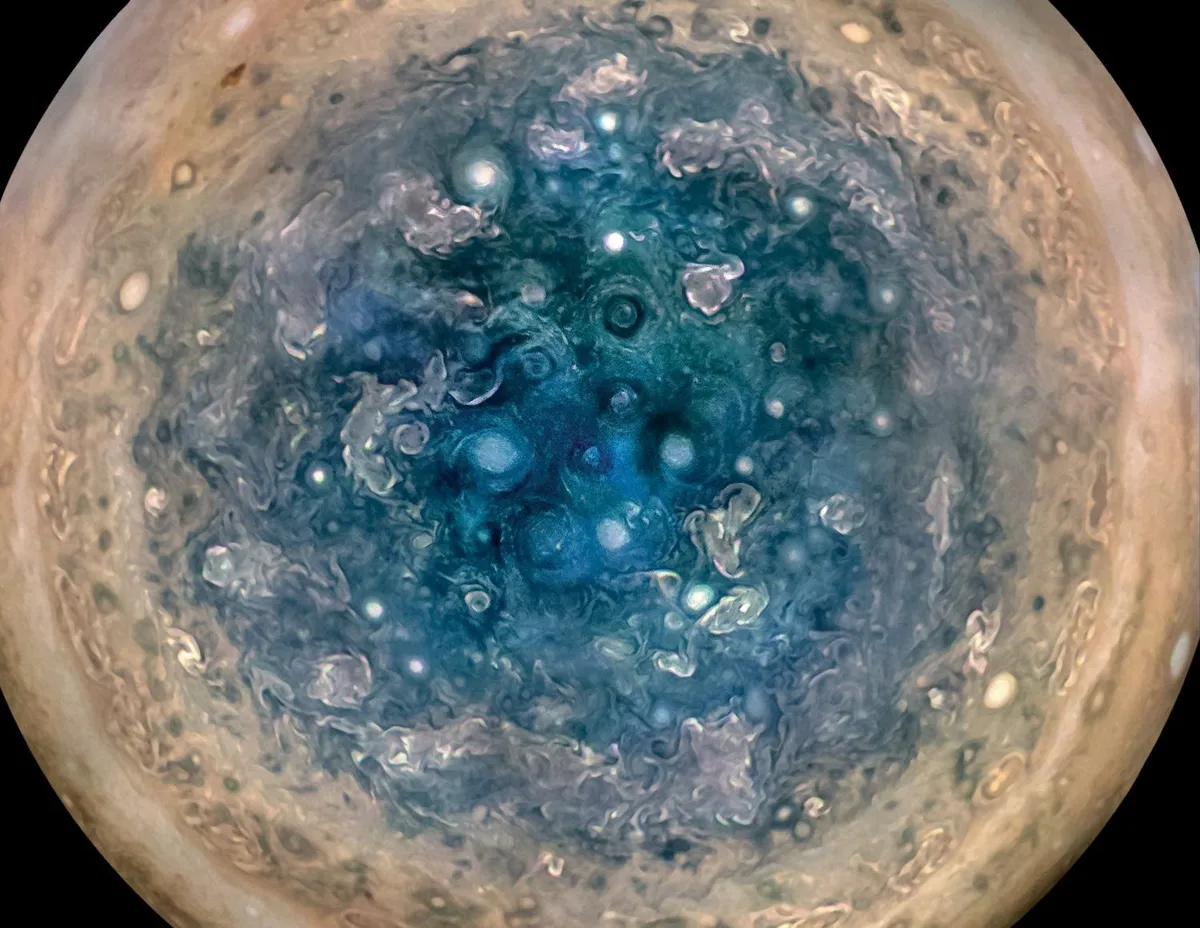
Jupiter's shrinking Great Red Spot
The Great Red Spot has been a familiar fixture on Jupiter for centuries.
The swirling maelstrom is caught between the South Equatorial Belt to its north, and a white zone to its south, and spans a distance 1.3 times Earth’s diameter.
Juno has spent several of its passes looking at the Spot. The team hopes its gravitational maps will eventually reveal how far down the storm extends, giving an insight into how the storm has been raging for so long.
But could the storm be about to blow itself out?
The Spot has been getting smaller for many years, but this shrinking sped up dramatically in May 2019.
By mid-June, analysis of amateur images showed the Spot’s size had reduced by 3,000km – around 20 per cent of its overall size.
Fragments of the storm, referred to as blades or flakes, are breaking off the main storm and melting away into the surrounding belts and zones.
Rivers of dark material also appear to be flowing from the Spot, making it appear as though the storm is unravelling.
This is the first time such activity has been seen around the Spot and astronomers, both amateur and professional, are watching with avid interest.
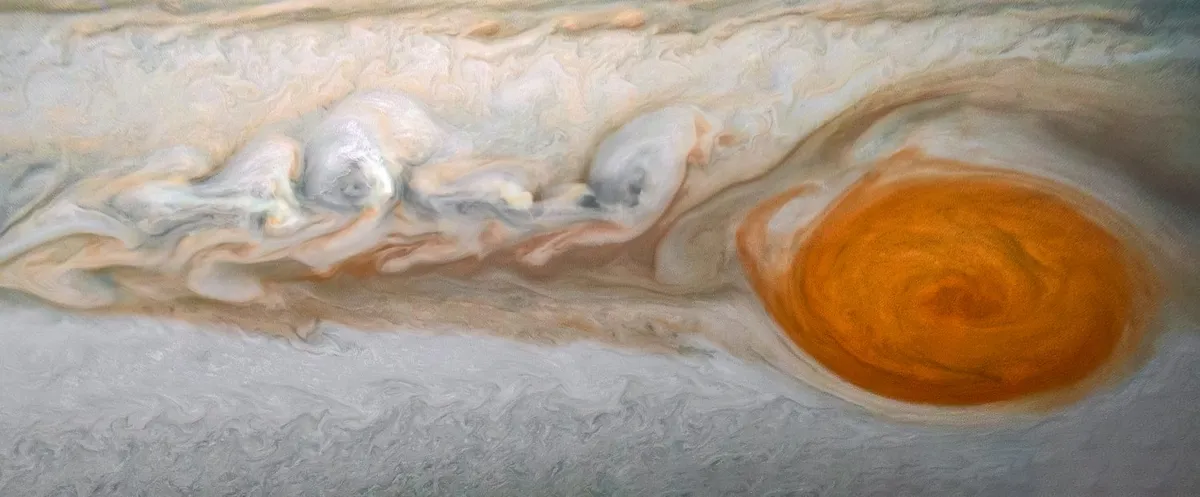
This article originally appeared in the August 2021 issue of BBC Sky at Night Magazine.
